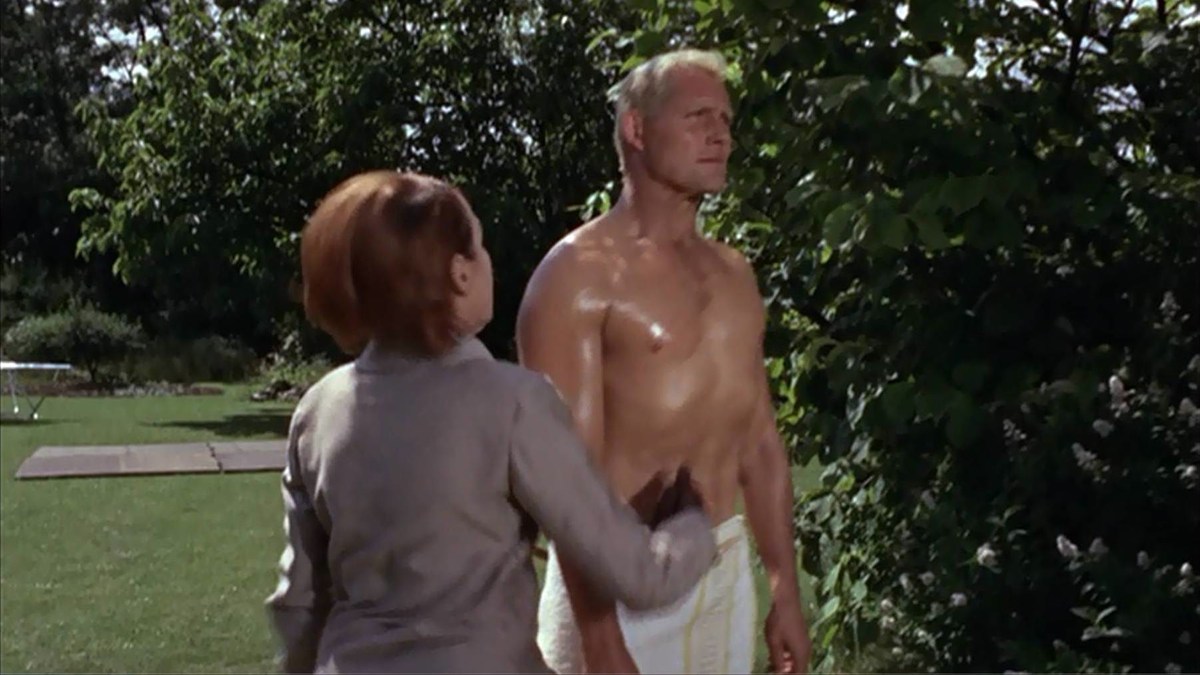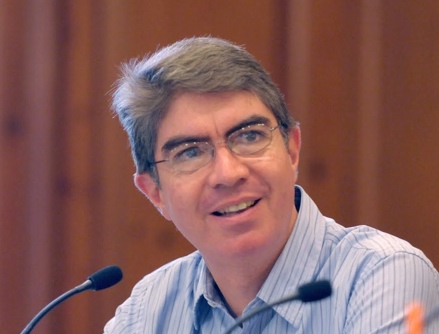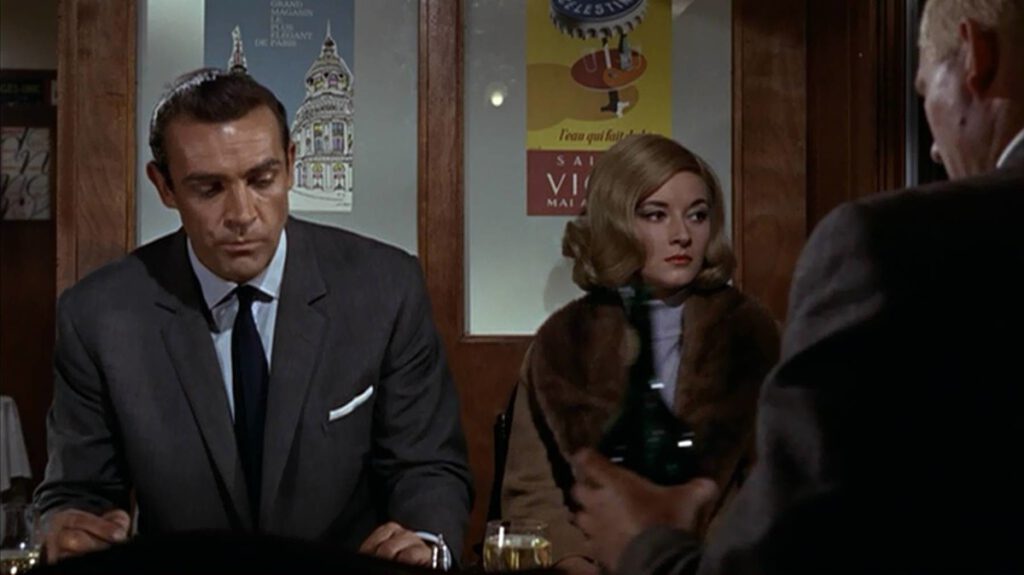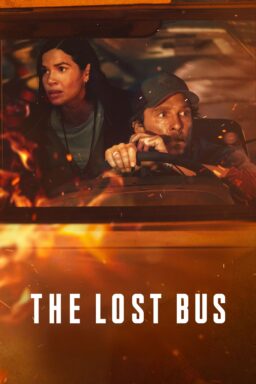“From Russia with Love” (1963) is one of the best James Bond movies and one of the first sequels to surpass the success of an original entry (“Dr. No”). Its existence represents a crucial reason for the series having lasted until today. The picture is not be quite as good as “Goldfinger,” but it provided a better influence on the following films of the series, with an ambience of suspense and danger that couldn’t be fully replicated until the recent arrival of the Daniel Craig Bonds.
“From Russia with Love” deals with the defection of a beautiful Russian embassy employee in Istanbul who seeks political asylum in the U.K. in exchange for a Lektor decoding machine, an intriguing-sounding Maguffin that, as such, is of no further consequence. Her only other condition is for Agent 007 to be the one assigned to collect her in Turkey, claiming she has fallen in love with him through his photograph. Behind what the English see as an obvious trap from the Russians is SPECTRE’s nefarious plan to pit the superpowers against each other. They provide Bond with an evil guardian angel of sorts to assist him in unwittingly accomplishing their own goals. Ian Fleming’s original novel had the Russians from SMERSH playing the part of the manipulators and even though the film opened shortly after the Cuban Missile Crisis, it tried to downplay the political connotations by making chess master Kronsteen (Vladek Sheybal) the brains behind the scheme. The end result is still a Cold War thriller in the best sense of the word.

“From Russia with Love” has one of the most complex plots in the series, but despite its abundance of twists and turns, it is surprisingly easy to follow, unlike some in the later entries (case in point: the confusing opium, diamond and weapons trades between the Soviets and Afghan rebels in “The Living Daylights“). The story takes a while to be set up; it’s almost twenty minutes into the movie before our (real) hero finally makes his appearance. There are plenty of witticisms uttered throughout but the picture is dead serious about its subject, and a sense of menace is present from its very first frame.
It is populated with imposing, larger than life characters that never feel overblown. The film works especially well because of how significant the stakes become, thanks to the deep contrast between the fondness Bond (Connery) has for Kerim Bey (Pedro Armendariz) and his palpable distaste for enemies Rosa Klebb (Lotte Lenya) and Donald Grant (Robert Shaw). It would be almost a half a century before a Bond feature could provide another cast at the level of this entry and that in “Goldfinger,” its immediate follow up.

“From Russia with Love” broke new ground for the series in several ways. It was the first Bond to include a pre-title sequence, creating the very effective tradition of starting every entry on its feet. It was the first to provide truly fascinating gadgets like the “nasty little Christmas present” of a lethal briefcase and a rather primitive car phone that must have blown away audiences at the time. There is still a bit of rawness in Bond’s relationship with the rest of the recurring cast, such as with the newly appointed Desmond Llewellyn as Q, but Connery really comes into his own here.

The film has one of the most iconic scenes in the series in Rosa Klebb’s testing of Grant’s endurance by smashing her steel knuckles into his waist. She’s an otherwise unremarkable looking lady who’s made to look like the most sinister of creatures with such details as her bottle-bottom glasses, a venom-spiked shoe, and one hell of an attitude.

The movie successfully creates one of the rare instances in the series where Bond is put in a situation with no apparent, possible escape and even though its resolution is based on the always reliable “fallacy of the talking killer,” director Terence Young gives it the intriguing facet of having our hero outsmarting Grant by resorting to his greed. He features what is surely the best fight scene in the series (and one of cinema’s all-time greats) and it’s all the more remarkable coming from the days when movie clashes were mere stylized exercises. Here for the first time you had two adversaries with an intense mutual hatred and a clear intent of causing damage with every vicious blow.

“From Russia with Love” is among the top Bonds, but I don’t see it as the very best. Except for a truly dangerous helicopter chase (obviously inspired by Hitchcock’s “North by Northwest”) the rest of the action sequences aren’t nearly as good as those in later entries. The gypsy cat fight is more laughable than anything else and I’ve never been terribly fond of the usual Bond battle sequences like the one taking place at their camp, with opposite teams facing one another in the fashion of the old Universal Studios stunt shows. After a while one tends to forget who’s fighting who and for what purpose, especially since the players here aren’t given the customary opposite-colored uniforms to distinguish one group from the other (Bond appears confused as well, attacking members of both sides).
I’m also not crazy about the chase scene at the lake where Bond discharges four barrels of petrol that won’t detonate when struck directly by machine-gun fire while on 007’s craft, but still, inexplicably, produce over a dozen separate explosions in the water. The success of this scheme depended entirely on the villains being incredibly naïve in stopping at just at the right place and time. This was clearly a hazardous scene to shoot as we get to see a couple of incompetent stuntmen paying dearly for getting too close to the fire, but the end result is nothing terribly special.

Despite its occasional shortcomings, “From Russia with Love” is still a terrific Bond entry. There’s true chemistry between Connery’s 007 and Armendariz’s Kerim Bey, and it is all the more remarkable when considering that the Mexican actor was in great pain and living his final days while the shooting took place. His character’s eventual fate is among the few in the Bonds to have a real emotional impact.

Robert Shaw’s villainous screen presence wasn’t fully matched until Bardem’s Silva made his appearance in “Skyfall” years later. Even though some see Bardem’s bleached, blonde hair as directly inspired by Max Zorin in “A View to a Kill” (and by Julian Assange), I suspect Grant is the real inspiration behind it. For such a small and frail looking lady, Lotte Lenya conveys an extraordinary personality that brings to mind Judi Dench’s performances in the later pictures. Unlike other 007s that relied on their action scenes and stunts for success, it is the mainly the human element that made this a great Bond film.
Even though mild by today’s standards, “From Russia with Love” was fairly controversial when it first opened. As kids, this was the one Bond movie we couldn’t see until adulthood. It’s curious that we have to go all the way back to the second entry in the series to find the closest thing to a nude scene. The film makes no excuses about portraying its title character as the true sexist that he is; we get to see him volunteering to select the more “gifted” of two gypsy women or playfully spanking his leading lady (and even slapping her to extract information). I’m not a big believer in the recent axiom that every Bond girl necessarily has to be his equal; some of the best female characters in the series have been played by the most beautiful women from their time, whose lines were often dubbed in post production (think Ursula Andress, Shirley Eaton and Claudine Auger).

Daniela Bianchi provides Tatiana Romanova with enough appeal and vulnerability to make the audience fully sympathize with her, especially when Klebb comes on to her in a sequence that’s eerily similar to that in “Skyfall” where Javier Bardem is introduced on-screen while harassing Craig’s 007. I can easily picture today’s viewers blasting Bianchi for playing somewhat of a decorative item, but I’ll take Tatiana over most of the recent Bond girls.
“From Russia with Love” is an extremely taut entry and it has perhaps the best story among all Bonds, but “Goldfinger” is definitely the better all around feature. Ironically, the latter’s influence eventually brought more harm than good. The magnificent depiction of megalomaniac Auric Goldfinger inspired the 007 producers to abandon the mold of the sinister Blofeld and to go instead with grandiose portrayals of the character that made him lose most of his edge. They ranged from the campy (Donald Pleasence), to the bland (Telly Savalas) and the plain absurd (Charles Gray) in what was surely the lamest period in the series. Instead of showing him as they do in “FRWL,” finding perverse fascination in things like the duel of his Siamese fighting fish and uttering perverse lines like “let his death be a particularly unpleasant, humiliating one!”, Blofeld eventually went the way of volcanoes for lairs (“You Only Live Twice“) and dressing in drag for inexplicable reasons (“Diamonds Are Forever“), the kind of material that inspired the creation of Dr. Evil from the Austin Powers spoofs that doesn’t really have anything with the characters we first got to see here.
The formula of “From Russia with Love” has proven to be the most difficult to replicate throughout the years. There were a couple of decent tries during the 1980s such as Dalton’s “The Living Daylights,” but one has to go all the way into the 2000s with “Casino Royale” and Sam Mendes’s “Skyfall” to find successors that truly matched its sense of peril. This is clear proof that Daniel Craig has been the most worthy successor to Connery, after all, what other actor among those who’ve played Bond can you picture doing the role justice in a classic like “From Russia with Love”?












